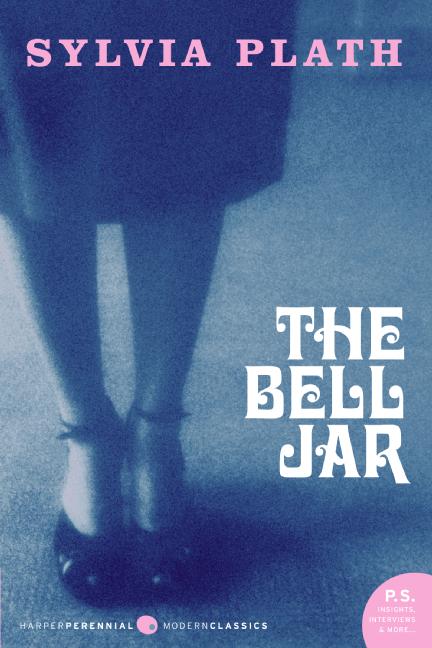 Sylvia Plath’s life reads like a tragedy. A gifted writer and poet from an early age, she struggled with depression starting in her teenage years. She married poet Ted Hughes, with whom she shared a tumultuous relationship and two children. In 1963, at the age of 30, she committed suicide by sticking her head in the oven.
Sylvia Plath’s life reads like a tragedy. A gifted writer and poet from an early age, she struggled with depression starting in her teenage years. She married poet Ted Hughes, with whom she shared a tumultuous relationship and two children. In 1963, at the age of 30, she committed suicide by sticking her head in the oven.
The Bell Jar was Plath’s only novel, and while it met with mixed reviews upon its release, it has become a classic in the American canon. The semi-autobiographical tale is based on Plath’s experience, at 19, of winning a contest for Mademoiselle magazine (called Ladies’ Day in the book) and getting to be guest editor/intern for a month along with several other girls. Despite the honor, Plath’s protagonist/alter ego Esther Greenwood finds herself in New York City, lost and uncertain, growing increasingly mentally and emotionally unstable.
Esther is fairly obsessed with the notion of death, and more so as she loses her grip on reality. The book opens with the execution of the Rosenbergs, in 1953. “It was a queer, sultry summer, the summer they electrocuted the Rosenbergs, and I didn’t know what I was doing in New York… It had nothing to do with me, but I couldn’t help wondering what it would be like, being burned alive all along your nerves. I thought it must be the worst thing in the world.” Esther can’t stop thinking about the deaths of the infamous couple, a morbid event that is at the same time a subject that Ladies’ Day and 1950s society don’t expect her to have an opinion on.
As her month in New York progresses, Esther becomes more and more detached from the world around her: as if a giant bell jar has been placed over her, muting and distorting her surroundings and locking her inside herself. There seems to be no escape from the stifling numbness. At one point, she considers joining the Catholic Church. “I would be in black, with my dead white face, and I would throw myself at the priest’s feet and say, ‘O Father, help me.’”
Help comes, in its way, after a serious suicide attempt that involves Esther taking an overdose of pills and crawling under the house (another echo of Plath’s own experiences). She is checked into a hospital where she receives regular electroshock treatments and therapy, meeting with a doctor who helps her to overcome some of her deeper issues. By the end of the story, Esther is improving. And yet she asks, “How did I know that someday—at college, in Europe, somewhere, anywhere—the bell jar, with its stifling distortions, wouldn’t descend again?”
With the reader’s knowledge of Plath’s true life story, there is an answer — that the bell jar did descend again, and drove her to take her life in the same house as her children. Whether that was from the return of her old depression, the unhappiness of her marriage, or some mysterious compulsion, this fact lends a whole new poignancy to the book, which in other ways can be light, entertaining, even humorous. It’s fascinating to see how a young woman of great intelligence and ambition could yet be so constrained —by 1950s society, by her own mind, or perhaps by some combination.
And, for either sex, The Bell Jar is a valuable, utterly convincing look into the mind of a person tortured by self-doubt and clinical depression. While Esther’s self-destructive compulsions are irrational, Plath skillfully relates her tale in a way that makes Esther relatable. This is perhaps the most unsettling part of The Bell Jar: that, after reading it, we know what it’s like to lose yourself.

 The Bell Jar by Sylvia Plath
The Bell Jar by Sylvia Plath



 Our Monthly Tip: Make an “In Case of Death” File to Ease Loved One’s Grief
Our Monthly Tip: Make an “In Case of Death” File to Ease Loved One’s Grief
 Passing of Beloved Comedian Births a New Comedy Festival
Passing of Beloved Comedian Births a New Comedy Festival















